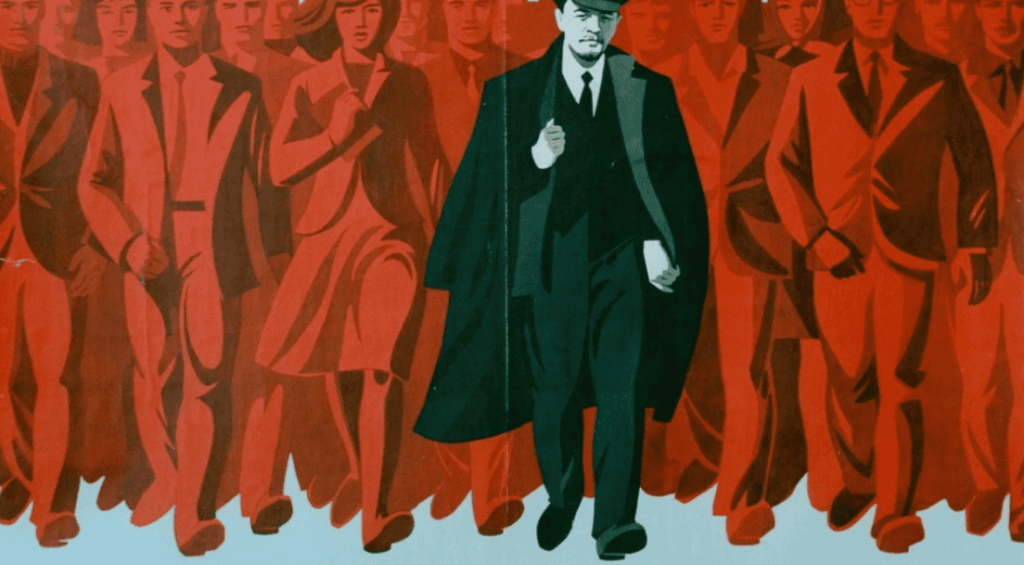Inequality is a major concern for many economies, prompting the question of whether some regimes are more effective at reducing inequality than others. This column uses measures of welfare including health status and living space to show that, despite Soviet communism’s aim of radical egalitarianism, it failed to eliminate inequality as effectively as promised. While communism did lead to higher upward mobility, strong welfare systems in Western Europe and bureaucratic shortcomings in the East created a landscape where equality in welfare distribution was broadly similar, despite the paths to social advancement being markedly different.
Inequality is a major concern for many economies, as it shapes social stability, economic growth, and overall wellbeing. Across the Western world, inequality has been growing since the 1970s, although the pace and intensity of this trend have varied considerably across countries (Piketty 2014, Atkinson 2015). In some cases, the rise has been driven primarily by widening income gaps, while in others it has been linked more closely to disparities in wealth accumulation, education, or access to secure employment. Piketty (2014) emphasises the structural forces behind these patterns, including the tendency for capital returns to outpace economic growth, while Atkinson (2015) points out the role of policy choices, welfare regimes, and labour market institutions in shaping national trajectories. Together, this body of work suggests that inequality is also profoundly influenced by political and institutional contexts.
One important question that arises is whether regime change – whether in the form of an economic system or institutional framework – would actually contribute to reducing inequality. The answer is not straightforward, since outcomes often depend on the type of regime change, the comparability of outcomes across regimes, alongside the broader social and historical context.
Recent European history provides a natural experiment for studying the effects of regime change, particularly through the availability of datasets that combine both current and retrospective information about individuals who lived under Soviet communism. Soviet communism was a set of regimes implemented in Central and Eastern Europe that promised radical egalitarianism through the abolition of private property, centralised planning, and the bureaucratic allocation of resources. But whether this translated into greater equality or merely reproduced new hierarchies remains contested. While Western European countries responded to the perceived threat of communism by expanding welfare states funded by progressive taxation, regimes under Soviet communism relied on bureaucratic distribution of goods such as housing and healthcare, which often fostered privilege, informal networks, and persistent social stratification.
Did communist systems genuinely deliver greater equality in measures of welfare and living standards? To what extent did they expand opportunities for upward mobility or help individuals overcome disadvantages such as ill-health? Or, conversely, did the structures of those systems create hidden barriers that persisted long after their collapse?
Inequality in Soviet communism
Although founded on principles of egalitarianism, Soviet communism produced its own hierarchies, with wage differences and distinctive forms of social stratification, where the bureaucratic allocation of private goods provided bureaucrats with opportunities to privilege themselves and their own networks. Soviet communism did not eliminate the influence of religion, which continued to shape social norms and preferences. Indeed, the communist regimes displayed enduring regional, ethnic, and gender disparities in political representation, mirroring patterns found elsewhere. In addition, a widespread culture of informal payments and exchanges reinforced social and family networks while sustaining hidden systems of privilege, ultimately limiting the capacity of communist regimes to deliver genuine equality. Finally, the provision of healthcare services under Soviet communism regimes was further complicated by geographic and infrastructural disparities. Urban centres often had better-equipped facilities and better qualified healthcare professionals compared to rural areas.
Measuring inequality in comparable units
Chancel et al. (2019) show that most European countries experienced a rise in income inequality between 1980 and 2017. The level and evolution of income inequality in Europe are due to trends within countries rather than to differences in average standards of living or macroeconomic growth rates across countries. Inequality among EU citizens is significantly lower than among US citizens, but slightly higher than in countries with established welfare models, such as Australia and Japan (Fisher and Filauro 2021). Although prior research has shown that income inequality declined under Soviet communism (Bukowski and Novokmet 2021), income inequality might be problematic in comparing across regimes as income might overlook important hidden inequalities resulting from the bureaucratic allocation of private goods in Soviet communism societies.
In Costa-Font et al. (2025), we use comparable welfare metrics that are relevant and more consistent across different contexts and less subject to manipulation, such as inequalities in measures of health and living conditions both at adulthood and childhood. Finally, we use measures that work well with categorical and ordinal data. Figure 1 reports that both measures of welfare used – self-reported health and living space – during childhood and adulthood reveal, for most cohorts, higher welfare for individuals not exposed to Soviet communist regimes.
Figure 1 Self-reported health (top) and living space (bottom) across age cohorts of individuals exposed and unexposed to Soviet communist regimes




Inequality and mobility across regimes
Despite the ideological emphasis on equality within communist regimes, Figure 2 reveals that health inequality levels were not dramatically different between communist and non-communist countries, while Figure 3 shows that inequality in living space was comparable across regimes. This challenges the commonly held assumption that communist regimes either achieved radical equality or, conversely, created deeply unfair systems that favoured party elites. In reality, inequality was moderated by broader social and economic dynamics, not just ideology
Figure 2 Inequality in health in childhood (top) and adulthood (bottom)




Figure 3 Inequality in living space (Gini indices)


Social mobility across regimes
Nonetheless, we examine trends in health and social mobility. Whilst we find no major differences in health mobility across regimes, we measure intergenerational elasticity in our measure of socioeconomic status (living space) across regimes, and we document that individuals in communist countries experienced higher upward mobility compared to their counterparts in countries that did not experience Soviet-style governance. This suggests that, despite inefficiencies in many aspects of governance, the structure of communist regimes allowed greater fluidity for individuals to move across socioeconomic strata, at least relative to their peers in non-communist countries.
Explanations
There are various potential explanations for these patterns.
- First, in countries that were not exposed to Soviet communism, the presence of well-developed welfare states might have played a key role in keeping inequality in check. These welfare systems often provided consistent support, such as public housing, education, and healthcare, which mitigated disparities and promoted a baseline of equality.
- Second, in Soviet communist countries, while there was a strong ideological push to reduce inequality, bureaucratic inefficiencies undermined this effort. The centralised and often poorly managed allocation of goods and resources meant that inequality was not effectively eliminated, even though social mobility opportunities were higher.
- Finally, by weakening trust and abolishing the accumulation of wealth, Soviet communism strengthened preferences for family support, suggesting that family structures and networks, rather than fading, might have become ever more important (Costa-Font and Nicinska 2023).
Legacy and lessons
The legacy of Soviet communism in Europe is complex. On one hand, the system failed to eliminate inequality as effectively as promised. Mobility opportunities diverged across Europe, with higher mobility in communist regimes, but inequality levels converged across countries regardless of political ideology. The balance between strong welfare systems in Western Europe and bureaucratic shortcomings in the East created a landscape where equality in welfare distribution was broadly similar, but the paths to social advancement were markedly different. Western European countries, with their adaptive welfare states, provided stability and fairness but sometimes at the cost of more rigid class structures. These results are suggestive that policy intervention can potentially exert a similar influence as regime change.
Source : VOXeu



































































